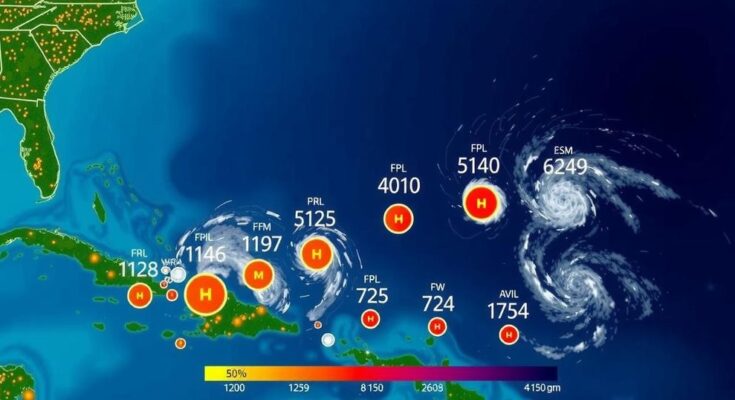The 2024 Atlantic hurricane season concluded with 18 named storms, including 11 hurricanes and 5 major hurricanes. This season showcased exceptional activity, particularly post-September, with notable storms causing significant damage and fatalities. NOAA’s advancements in forecasting provided critical support, highlighting the importance of continued scientific progress in hurricane prediction and response efforts.
The 2024 Atlantic hurricane season concluded on November 30, 2024, featuring an unexpected resurgence in activity despite a typical lull during peak periods. The season recorded 18 named storms, 11 of which developed into hurricanes and five becoming major hurricanes. Five hurricanes made landfall in the continental United States, with two of them classified as major hurricanes, aligning with the forecasts from NOAA’s Climate Prediction Center.
Despite the patterns, this season distinguished itself by having twelve named storms develop after the usual peak in early September, with seven hurricanes forming after September 25—marking a historical high. Hurricane Beryl set the record for the earliest Atlantic Category-5 hurricane, while Hurricane Helene emerged as the deadliest storm since Hurricane Katrina in 2005, causing over 150 fatalities. Furthermore, Hurricane Milton highlighted remarkable rapid intensification, marking notable achievements in tracking and forecasting expertise during this active season.
NOAA’s advances in predictive models were a significant factor in achieving the most accurate National Hurricane Center (NHC) forecasts recorded throughout the year. Innovative technologies, including improved aerial reconnaissance and ocean monitoring systems, contributed substantially to hurricane research. The 2024 season not only illustrated the need for ongoing scientific developments in forecasting but also emphasized the importance of federal resources in preserving lives and property against natural disasters.
The Atlantic hurricane season is an annual period when tropical cyclones form in the Atlantic Ocean, typically occurring from June to November. Each season varies in intensity and the number of storms, which can significantly impact coastal regions. The National Oceanic and Atmospheric Administration (NOAA) provides forecasts based on atmospheric and oceanic conditions to prepare communities for potential storms. Generally, an average season produces around 14 named storms and several hurricanes, making precise predictions crucial for emergency management and public safety.
In summary, the 2024 Atlantic hurricane season was marked by unexpected activity levels, particularly in the latter months following a brief lull. Significant storms like Hurricanes Beryl, Helene, and Milton underscored the season’s impact, both in terms of fatalities and property damage. NOAA’s enhancements in forecasting accuracy reflect the ongoing commitment to improving emergency response and preparedness, emphasizing the collaborative effort of scientists and researchers in mitigating the effects of powerful storms.
Original Source: www.noaa.gov




